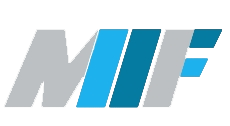



Let’s face it, getting a durable, attractive finish on metal parts used to mean messy, smelly, and often wasteful processes. Enter electrostatic powder coating – it’s not just a different method, it’s a whole different game. If you’re weighing options, here’s why powder coating often blows traditional surface treatments out of the water:
1. Environmental Champion vs. Pollution Problem:
Powder Coating: ZERO VOCs. That’s right, no nasty volatile organic compounds evaporating into the air or needing complex, expensive incinerators. It’s dry powder – clean to apply, clean to breathe around (with basic PPE).
Traditional Methods (Liquid Paint, Solvent Cleaning): VOC Nightmare. Solvent-based paints and cleaners release huge amounts of harmful VOCs. This means:
Heavy air pollution.
Strict (and costly) environmental regulations to comply with.
Explosion-proof booths and massive ventilation systems needed.
Hazardous waste disposal (sludge, contaminated solvents).
Winner: Powder Coating. Hands down the greener, safer, and more sustainable choice.
2. Waste Not, Want Not: Efficiency Smackdown
Powder Coating: The Recycling King. Overspray isn’t trash – it’s gold dust! Sophisticated recovery systems capture unused powder, filter it, and feed it straight back into the gun. Achieves 95%+ material utilization in automated lines. That’s huge savings.
Traditional Methods (Liquid Paint): The Leaky Faucet. Overspray? It splatters on the booth walls, becoming unrecoverable hazardous waste. Even with good techniques, typical transfer efficiency struggles to hit 60-70%. Most of what you pay for literally goes in the trash (or the hazardous waste bin).
Winner: Powder Coating. Dramatically lower material costs and virtually no hazardous paint sludge.
3. Built to Last: Durability Showdown
Powder Coating: The Armor. Chemically cured into a single, continuous, thermoset plastic skin. Resists chipping, scratching, fading, and corrosion incredibly well. Thicker, more uniform coats in one application.
Traditional Methods:
Liquid Paint: Can be durable if applied perfectly (multiple coats, perfect cure), but often thinner and more prone to chipping, scratching, and UV degradation over time. Solvent evaporation can leave microscopic pores.
Plating/Anodizing: Offer good corrosion resistance but are typically very thin coatings easily damaged mechanically. Limited color/finish options. Often involve harsh chemical baths (environmental/health concerns).
Winner: Powder Coating. Generally provides superior mechanical durability, impact resistance, and long-term color/gloss retention, especially for exposed parts.
4. Looks That Kill: Finish & Aesthetics
Powder Coating: Endless Style. Gloss, matte, satin, metallic, glitter, textures (wrinkle, vein, hammer tone), clear coats – you name it. Consistent, high-quality finish achievable in one step. Excellent color matching.
Traditional Methods:
Liquid Paint: Also offers good finishes, but achieving consistent thickness and a truly smooth, defect-free surface often requires multiple coats and skilled application. Runs, sags, and orange peel are common risks.
Plating/Anodizing: Primarily metallic finishes (chrome, zinc, gold, silver, colored anodize). Limited to metallic looks. Achieving consistent color in anodizing can be tricky.
Winner: Tie (Leans Powder). Both offer great aesthetics, but powder provides unparalleled variety and often easier consistency, especially for thicker, more resilient finishes. Plating/anodizing are specialists for specific metallic looks.
5. Speed & Throughput: Getting it Out the Door
Powder Coating: The Hare. Spray it on, straight into the oven. No waiting for solvent "flash-off" times. Automated lines can coat parts incredibly fast (sq meters/hour). Faster handling post-spray (powder is dry and clingy).
Traditional Methods: The Tortoise.
Liquid Paint: Requires significant time between coats for solvents to evaporate ("flash off") to avoid runs or solvent popping. Baking times still apply. Multiple coats = multiple delays.
Plating/Anodizing: Often involve multi-stage chemical baths with specific immersion times, rinses, and dwell times. Process can be lengthy.
Winner: Powder Coating. Generally higher potential throughput, especially for batch processing, due to the elimination of flash-off delays and high reclaim efficiency.
The "Yeah, But..." (Where Traditional Might Still Fit)
Super Thin Films: Plating/anodizing win for ultra-thin coatings (microns).
Extreme High-Temp Applications: Some specialized liquid paints or ceramics handle higher temps than standard powders.
On-Site Repair/Field Work: Liquid touch-up paints are far more practical than powder for small repairs in the field.
Non-Conductive Substrates: Traditional wet paints are still king for most plastics and complex non-conductive assemblies without needing conductive primers.
Massive, Non-Oven Friendly Parts: If it won't fit in an oven, liquid air-dry paints are the only option.
The Bottom Line:
Electrostatic powder coating isn't just an alternative; it's a major upgrade for most industrial finishing applications involving conductive parts (especially metal). It crushes traditional methods on environmental impact, material efficiency, and long-term durability, while offering superior finish variety and often faster throughput. The initial setup cost might be higher, but the savings on materials, waste disposal, compliance, and replacement parts due to longer lifespan make it a compelling long-term investment.
If you're dealing with solvents, low transfer efficiency, hazardous waste headaches, or parts that just don't last as long as they should, it's seriously time to explore the powder revolution. Experts like Ming Fan can help you crunch the numbers and see if it’s the right powerhouse solution for your operation. Ditch the mess, embrace the powder!
MINGFAN Import and Export Trade (Dezhou) Co., Ltd.
+86-18315884617Follow Us
Copyright © 2026 Dezhou Mingfan Coating Equipment Co., Ltd.All rights reserved.

If you have any queries, get in touch today! Don't hesitate. We try to take the extra step for our customer satisfaction.